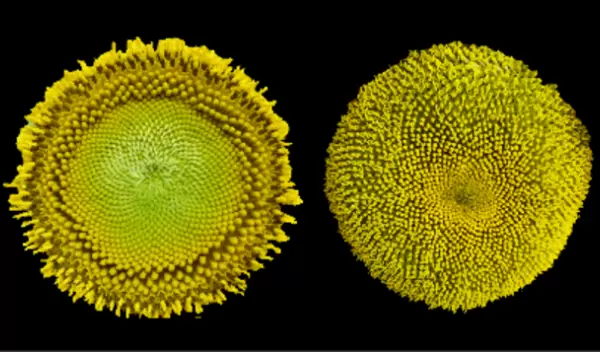
Circadian clock controls sunflower blooms, optimizing the flowers for pollinators
An internal circadian clock controls distinctive concentric rings of flowering in sunflowers, maximizing visits from pollinators, a new study by plant biologists at the University of California, Davis shows. The U.S. National Science Foundation-supported work is published in eLife.
A sunflower head is made up of hundreds of tiny florets. Because of the way sunflowers grow, the youngest florets are in the center of the flower face and the most mature are at the edges, forming a distinctive spiral pattern from the center to the edge.
An individual floret blooms over a couple of days. On the first day, it opens the male part of the flower and presents pollen, and on the second day, the female stigma unfolds to receive pollen. Somehow, florets coordinate their opening in concentric rings starting from the edge and moving inwards on successive days, with a ring of female flowers always outside the earlier-stage, pollen-bearing male flowers.
Pollinating bees tend to land on the ray petals around a sunflower head and walk towards the center, said senior author Stacey Harmer, a plant biologist at UC Davis. That means that they will pick up pollen after they have walked over the female florets, then carry it to a different flower head.
“We think that being able to coordinate in this way makes them a better target for bees,” Harmer said. “It’s a strategy to attract as many insects as possible.”
As farmers adapt to a changing climate, it will become increasingly important to make pollination as efficient as possible in crops that require it, Harmer said. Understanding how the circadian clock and the environment affect flowering will help breeders develop cultivars that flower at the optimal times of day to promote pollination, despite climate change and declining insect populations, she said.
"In a changing environment, it's critical to understand the mechanisms and interactions that affect pollination and allow plants to reproduce," said Kan Wang, a program director in NSF's Division of Integrative Organismal Systems. "This research is a great example of the type of work that will help us develop crops for a future climate."
